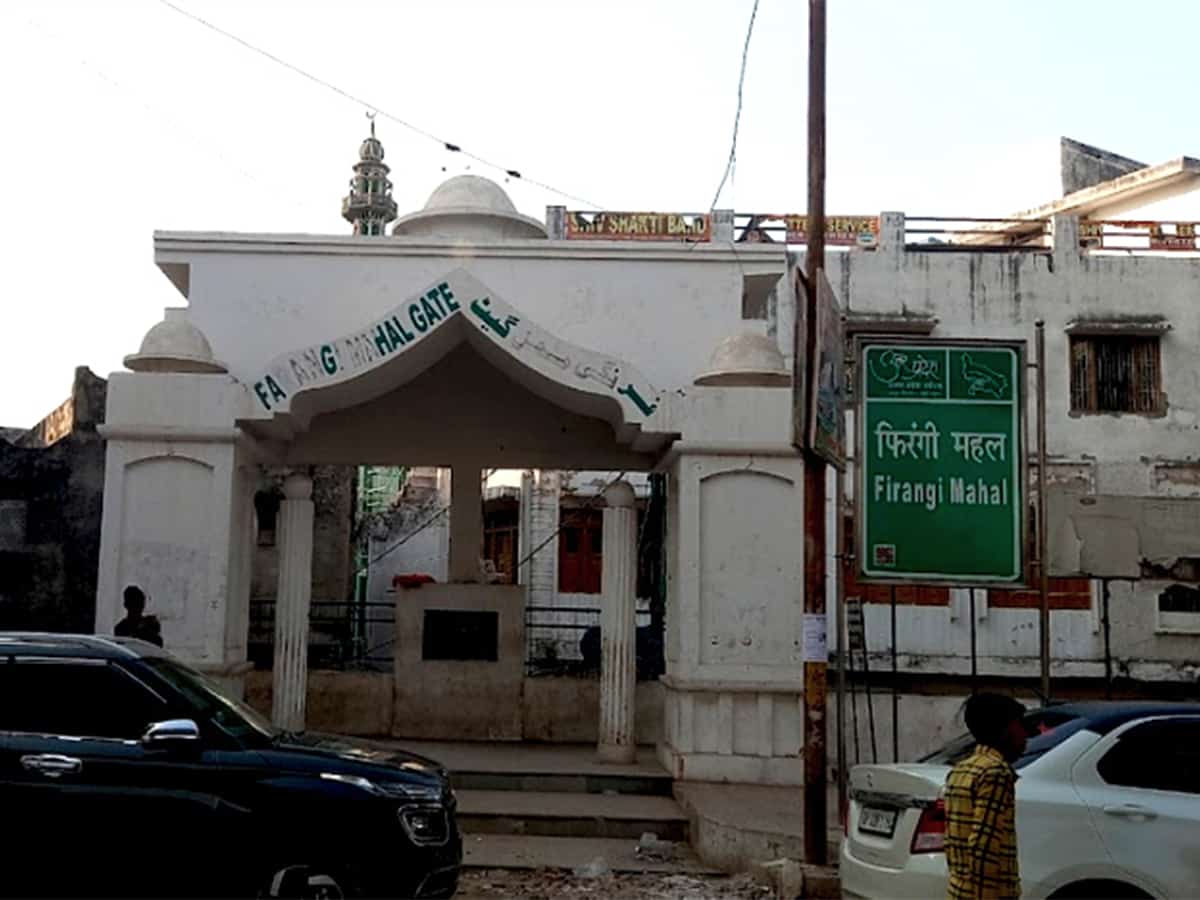
By Asim Kidwai
An iconic spiritual, literary and cultural space, Firangi Mahal, has been resonating with Lucknow’s awe-inspiring and multilayered heritage. It has stood the test of time.
A much-talked-about architectural marvel, nestled in the city’s heart, bears testimony to its vibrant past and still exudes its intellectual prowess. The term Firangi Mahal or Foreign Palace betrays its initial ownership by a Frenchman. However, the palace’s history took a turn when it was gifted to the Islamic scholar Mullah Nizamuddin by the Mughal Emperor Aurangzeb in the late 17th century.
It heralded its chequered journey from a sprawling and luxuriant palace to a renowned Islamic learning centre. The Firangi Mahal was no longer a palace but an institution. Here, the Dars-i-Nizami, which became the backbone of Islamic education in South Asia, was developed. This curriculum was so influential that it was adopted by institutions across the Indian subcontinent, and even today, it forms the basis of learning in many Islamic seminaries.
The architecture of Firangi Mahal reveals a judicious blend of Indian and Islamic styles, reflecting the cultural amalgamation that Lucknow is famous for. The palace’s grandeur is evident in its sprawling courtyards, intricate carvings, and majestic arches. Despite the ravages of time, Firangi Mahal stands tall as a symbol of Lucknow’s glorious past.
However, the palace’s current state is far from its former glory. Over the years, parts of Firangi Mahal have been sold off, and what remains is a fraction of the original structure. Despite this, the palace continues to be a hub of Islamic learning, with scholars from across the world visiting it to delve into the depths of Islamic jurisprudence. The legacy of Firangi Mahal extends beyond its physical boundaries.
The scholars it produced played a significant role in shaping the socio-political landscape of India.
Notable among them was Maulana Abdul Bari, a key figure in the Khilafat Movement, which was a crucial part of India’s struggle for independence.
Despite its historical and cultural significance, Firangi Mahal has not received the kind of recognition it deserves. If one delves deeper into Firangi Mahal, it becomes evident that its importance is not limited to its architectural grandeur or historical relevance. It is the intellectual legacy that it has fostered sets it apart. The scholars who studied and taught at Firangi Mahal were not just religious teachers; they were polymaths who understood various fields, including mathematics, astronomy, philosophy, and literature. This holistic approach to education is a testament to the vision of the scholars of Firangi Mahal.
The curriculum developed at Firangi Mahal, the Dars-i-Nizami, was not just about religious education. It was a comprehensive curriculum that included subjects like logic, philosophy, mathematics, and astronomy reflecting its creators’ inclusive and progressive vision. This curriculum was so influential that it was adopted by institutions across the Indian subcontinent, and even today, it forms the basis of learning in many Islamic seminaries.
The scholars of Firangi Mahal played a significant role in the socio-political landscape of India. They were at the forefront of various movements, advocating for social justice and equality. Their contribution to the Indian freedom struggle is noteworthy.
They were actively involved in the socio-political movements of their time. They played a significant role in the Indian independence movement, advocating for a united struggle against British rule. Their efforts helped bridge religious divides and fostered a sense of unity among the diverse communities of India.
Today, the rector of Darul Uloom Firangi Mahal Maulana Khalid Rasheed has had the advantage of learning at a Christian missionary school as well as acquiring a firm grounding in Islam. He has acquired higher education from Darul Uloom Nadwatul Ulema. He started the Islamic Centre in the Aishbagh Eidgah premises and reinvented the Madrassa Nizamia, giving free education to children from all social backgrounds. He also added English and computer studies to the syllabus to ensure a well-rounded personality of the students. The youngest member of the executive of the All India Muslim Personal Law Board, Maulana Rasheed, is also the Naib Imam of the city’s Aishbagh Eidgah. He has dedicated himself to establishing an interfaith dialogue and spreading a scientific temper among the Muslims. Firangi Mahal continues to symbolise Lucknow’s rich intellectual and cultural heritage. In spite of the challenges, efforts are being made to preserve and restore this historic gem.
Asim Kidwai, a freelance journalist, writes on the cultural, literary and architectural legacy of Lucknow and other cities of India.
